REFLECTIONS
Using Reflections in a Plane
One type of transformations uses a line that acts like a mirror, with an image reflected in the line. This transformation is a reflection and the mirror line is the line of reflection.
A reflection in a line m is a transformation that maps every point A in the plane to a point A', so that the following properties are true.
1. If A is not on m, then m is the perpendicular bisector of AA'.
2. If A is on m, then A = A'.
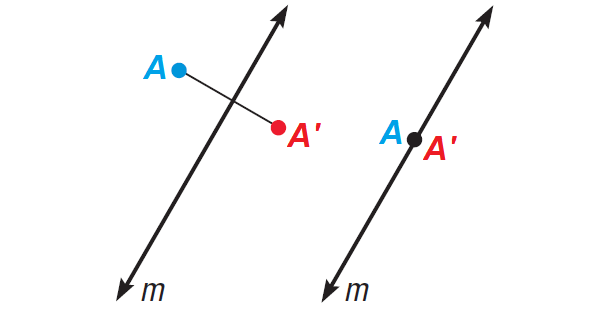
Reflections in a Coordinate Plane
Example 1 :
Graph the given reflections.
a. A(2, 2) in the x-axis.
b. G(5, 4) in the line y = 4.
Solution (a) :
Because A is two units above the x-axis, its reflection, A' is two units below the x-axis.
Solution (b) :
Start by graphing y = 4 and G. From the graph, we can see that G is on the line. This implies G = G'.
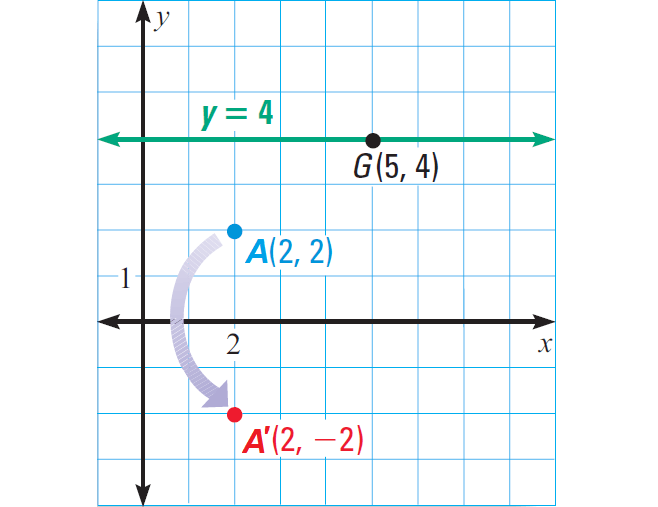
Reflections in the Coordinate Axes
Reflections in the coordinate axes have the following properties.
1. If (x, y) is reflected in the x-axis, its image is the point :
(x, -y)
2. If (x, y) is reflected in the y-axis, its image is the point :
(-x, y)
Reflection Theorem
A reflection is an isometry.
To prove the Reflection Theorem, we have to show that a reflection preserves the length of a segment. Consider a segment PQ that is reflected in a line m to produce P'Q'. The four cases to consider are shown below.
Case 1 :
P and Q are on the same side of m.
It has been illustrated in the diagram shown below.
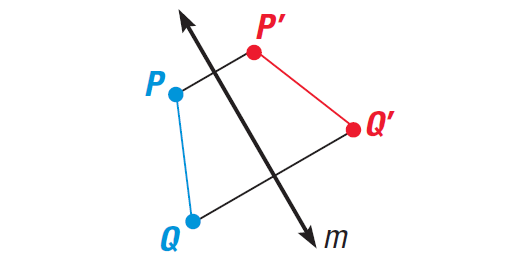
Case 2 :
P and Q are on opposite sides of m.
It has been illustrated in the diagram shown below.
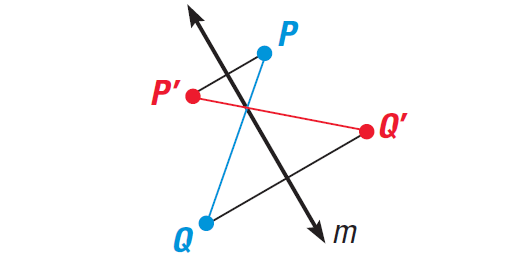
Case 3 :
One point lies on m and PQ is not perpendicular to m.
It has been illustrated in the diagram shown below.
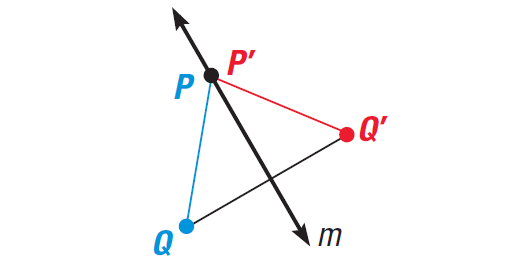
Case 4 :
Q lies on m and PQ ⊥ m.
It has been illustrated in the diagram shown below.
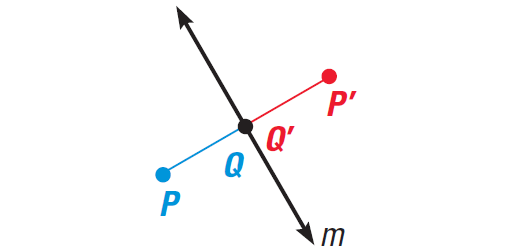
Proof of Case 1 of Reflection Theorem
Given : A reflection in m maps P onto P' and Q onto Q'.
Prove : PQ = P'Q'
Proof :
For this case, P and Q are on the same side of line m.
Draw PP' and QQ', intersecting line m at R and S.
Draw RQ and RQ'.
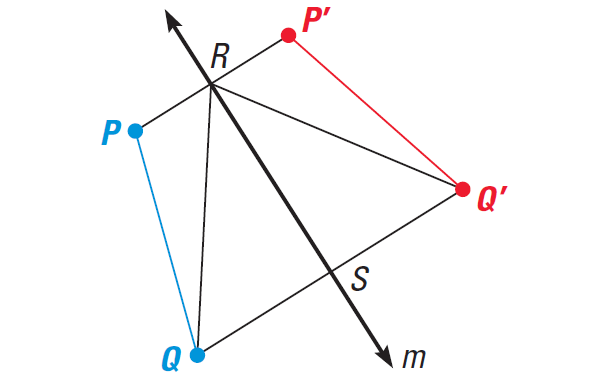
By the definition of a reflection,
m ⊥ QQ' and QS ≅ Q'S
It follows that ΔRSQ ≅ ΔRSQ' using SAS Congruence Postulate.
This implies
RQ ≅ RQ' and ∠QRS ≅ ∠Q'RS
Because RS is a perpendicular bisector of PP', we have enough information to apply SAS to conclude that
ΔRQP ≅ ΔRQ'P
Because corresponding parts of congruent triangles are congruent,
PQ = P'Q'
Reflections and Line Symmetry
A figure in the plane has a line of symmetry, if the figure can be mapped onto itself by a reflection in the line.
Finding Lines of Symmetry
Example 2 :
Hexagons can have different lines of symmetry depending on their shape.
Case 1 :
The hexagon shown below has only one line of symmetry.

Case 2 :
The hexagon shown below has only one line of symmetry.
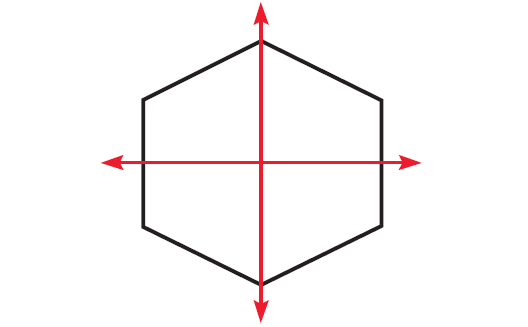
Case 3 :
The hexagon shown below has only one line of symmetry.
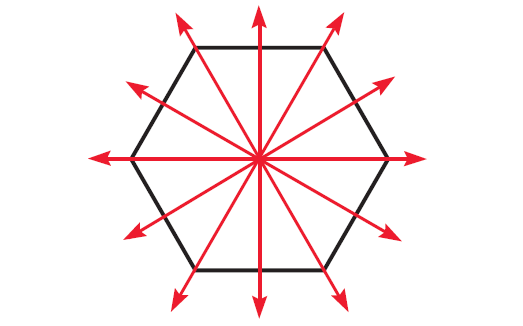
Kindly mail your feedback to v4formath@gmail.com
We always appreciate your feedback.
©All rights reserved. onlinemath4all.com
Recent Articles
-
Trigonometry Pythagorean Identities
May 02, 24 11:43 PM
Trigonometry Pythagorean Identities -
Trigonometry Quotient Identities
May 02, 24 11:08 PM
Trigonometry Quotient Identities -
Unit Rates
May 02, 24 09:27 AM
Unit Rates - Concept - Examples with step by step explanation